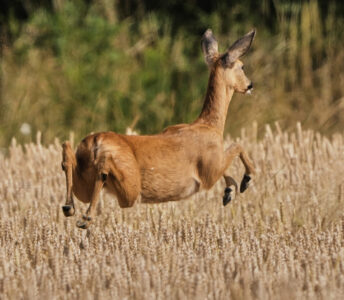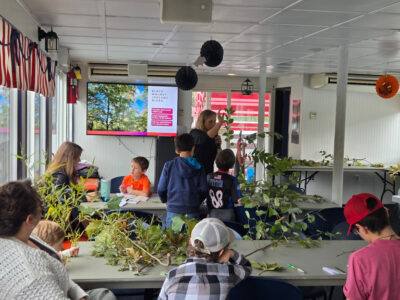Sustainable practices for a thriving garden
“Sustainability in the garden means incorporating practices that reduce our impact through small changes and choosing the right plant for the right place,” said Maddison Perzel, former head gardener at Elm Court, a historic mansion in downtown Butler, Pennsylvania.
She recently spoke at the Penn State Master Gardener’s of Lycoming County’s spring symposium “Bringing Nature Back: One Yard at a Time” on March 15 at the Klump Academic Center at Penn College.
“I’m personally motivated to support our pollinators and local birds because I enjoy seeing them in my garden. A bite out of a leaf means that my plants are playing a role in the local ecosystem by being a food source! There are so many great native plants that you can incorporate in your garden that will provide more interest and be lower maintenance than your standard, invasive landscape plants”
MISCONCEPTIONS OF
SUSTAINABLE GARDENING
“Many times folks think that sustainable or organic gardening is messy and wild,” she says.
Perzel believes landscaping becomes disordered because folks tackle too many things at once, making maintenance overwhelming.
“I’d rather you make one or two small changes in your garden that you can continue to maintain-instead of digging up your lawn to turn it into one large meadow that requires a full-time gardener. I believe that change happens in small increments at first-buying a native plant or two might help someone see the beauty in the pollinators that visit the blooms,” Perzel says.
THE IMPORTANCE
OF SOIL HEALTH
Soil health is important for sustainable gardening, says Perzel. She considers it a living, breathing organism, essential for providing the right nutrients and structure for gardens.
“The best thing you can do to help with soil health is to add compost. Increasing the organic material in your soil will help to feed the micro organisms and break down as a natural fertilizer for your plants.”
“Ideally you’re also mowing and mulching your leaves onto your garden beds which will compost in place while preventing weeds and holding moisture in the soil for the growing season,” Perzel continued.
WATERING AND MULCHING SUSTAINABLY
She uses mulching to improve water efficiency as well as soil health.
“I always go for 2-3 inches of hardwood mulch around the plant and its roots, being sure that the mulch does not touch the stem or base of the plant (to) prevent rotting,” says Perzel.
Native plants can also contribute to gardening sustainably.
THE ROLE OF
NATIVE PLANTS IN
SUSTAINABILITY
“Natives do a great job in sustainability because they have evolved to live in our part of the world, so they’re going to be able to withstand our climate and serve a purpose in our local ecology,” Perzel noted.
She shares a few of her favorites, such as itea virginica, also known as Virginia sweetspire, which is a great swap for non-native burning bushes.
Inkberry holly is a lovely soft holly to provide an evergreen pop of color Perzel said and can be used in place of boxwoods.
Perzel also noted that Eastern blue star is a multi season perennial that is not preferred by critters as it has a milky sap mountain mint is the perennial of the year and supports an unbelievable number of pollinators with its long lasting blooms.
She recommends asking the local garden center about available natives and choosing just one or two plants to add.
CREATING A RIPPLE EFFECT
“As both a gardener and landscape designer, I’m hopeful that by talking about what I have learned and incorporated into my garden practices that there might be a small ripple effect in our community,” Perzel says.
If everyone adds one or two native plants, Perzel says, and perhaps then talks about the change with their neighbors, momentum will build, creating a more beautiful and sustainable environment.


